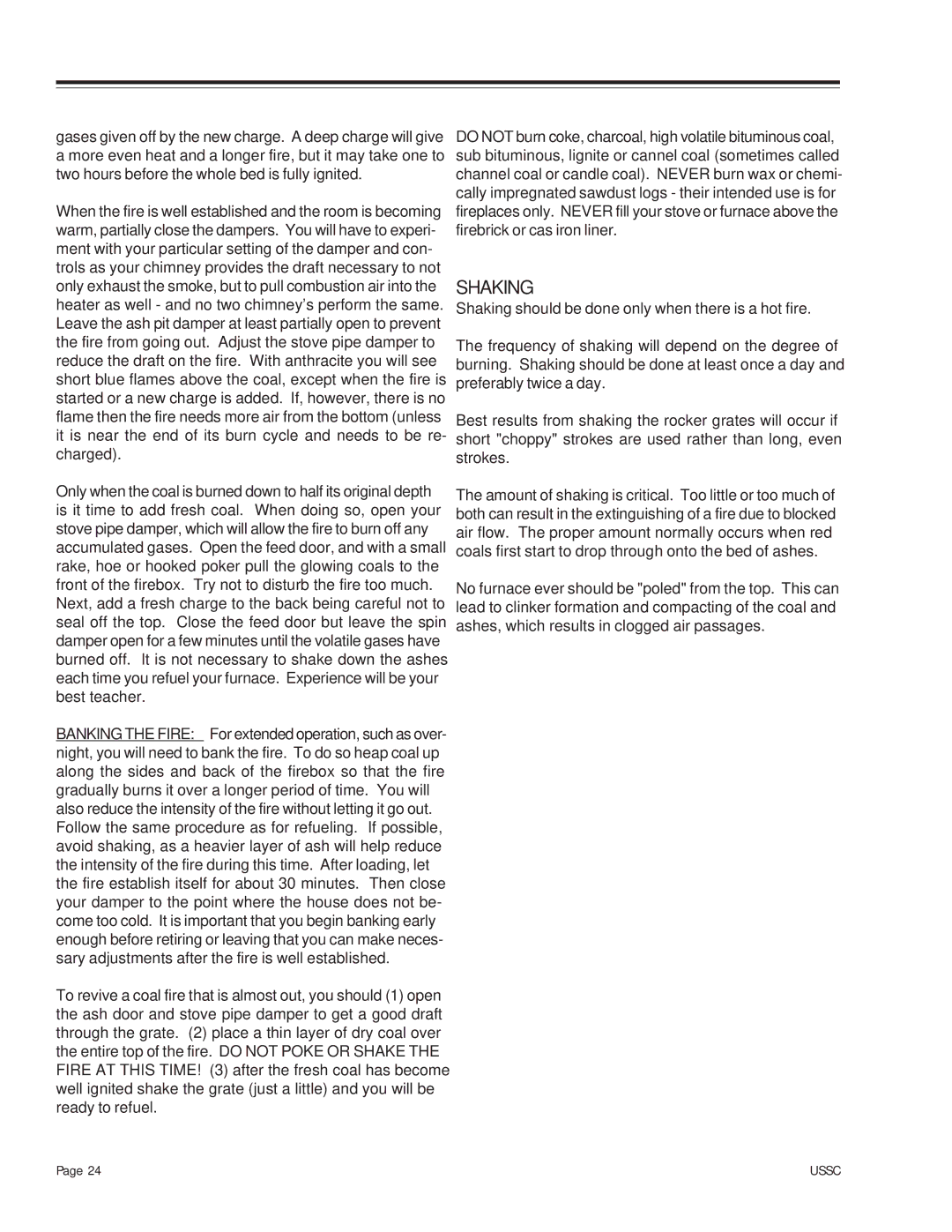24AZ, 24AF, 24AG specifications
The United States Stove Company has long been a trusted name in heating solutions, and their models 24AF, 24AZ, and 24AG exemplify the brand's commitment to quality and efficiency. These versatile wood stoves cater to a range of heating needs while emphasizing performance, durability, and user comfort.Starting with the 24AF model, this stove is designed for efficiency and warmth. With a heating capacity of up to 1,500 square feet, it's ideal for medium-sized spaces. The 24AF features a large firebox that allows for extended burn times, making it suitable for those who want to minimize the need for frequent reloading. The stove includes an EPA-certified design, ensuring that it operates with reduced emissions, which is not only beneficial for the environment but also for the health of occupants.
Next, the 24AZ model stands out with its elegant cast iron construction, which enhances both durability and aesthetic appeal. This model also offers a similar heating capacity but is equipped with a glass door that allows users to enjoy the sight of the flames while ensuring efficient heat distribution. The 24AZ incorporates a sophisticated air wash system that keeps the glass door clean, providing unobstructed views of the fire while minimizing maintenance concerns.
Lastly, the 24AG model brings a modern twist to traditional heating solutions. Ideal for those looking for efficiency without compromising on style, the 24AG features a compact design that fits seamlessly into smaller spaces. With a focus on energy efficiency, this model can deliver consistent heat output while using less wood, further reducing your environmental footprint. The cast iron construction also ensures that heat is retained longer, providing warmth even after the fire dies down.
All three models come with adjustable air controls, allowing users to manage burn rates and heat output according to their personal preferences. The robust construction of each unit ensures longevity, while the user-friendly designs make them accessible for homeowners of all experience levels. Whether you're heating a cozy cabin or a larger home, the United States Stove 24AF, 24AZ, and 24AG models stand out for their reliability and craftsmanship, offering practical solutions for modern heating needs.
